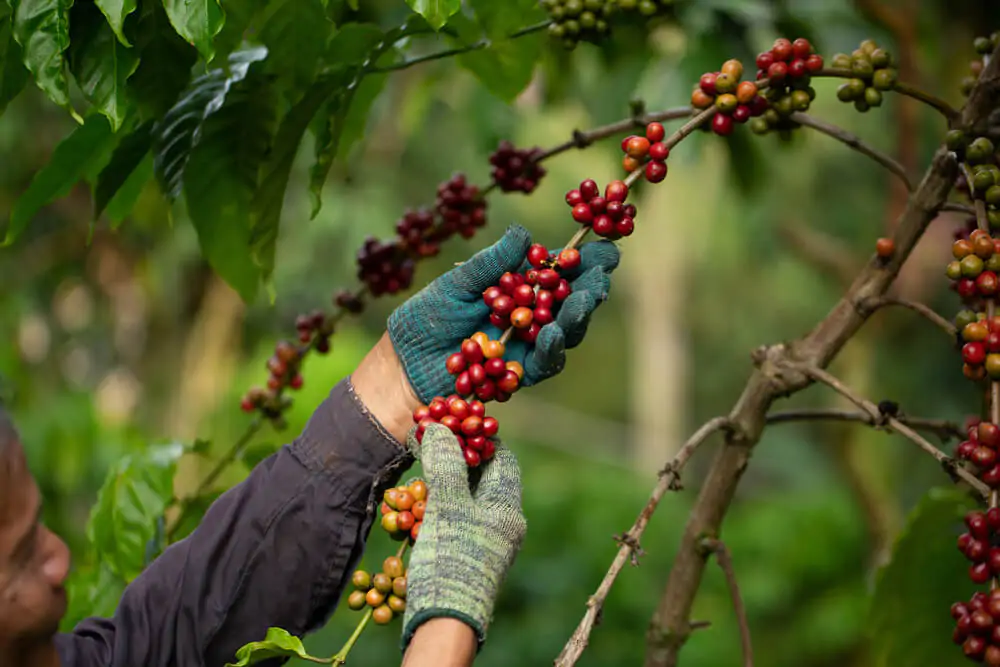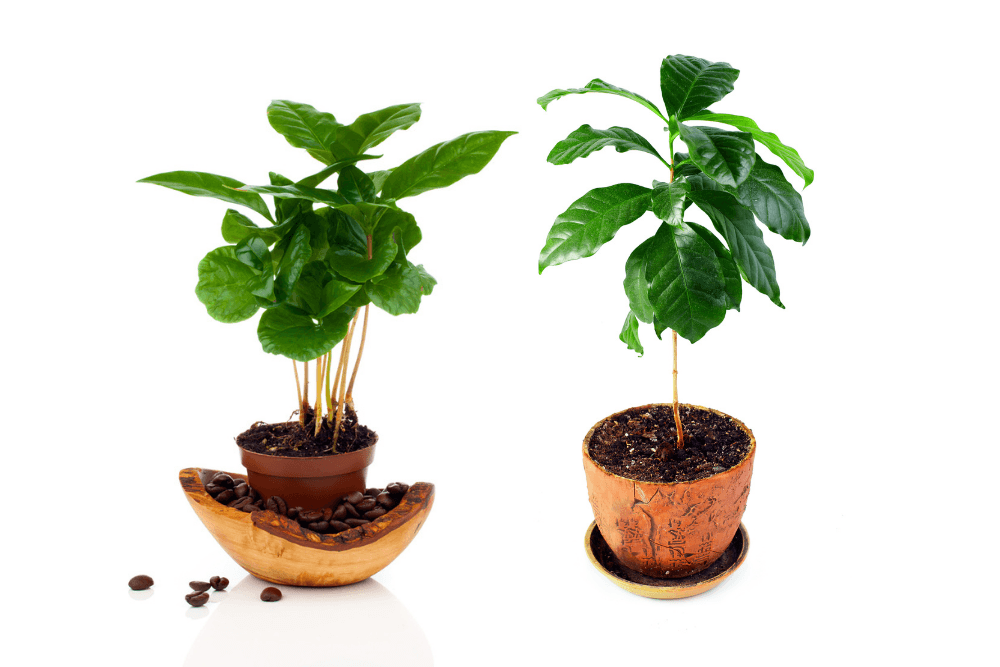Wondering how many coffee species are there? There are over 100, but only two are significant for commercial coffee production. Read on to find out more.

After water and tea, coffee is the most widely consumed beverage in the world. Coffee lovers like me contribute our fair share to the daily consumption of this popular brew. But, do we actually know which species of coffee we’re drinking?
If you’re a bit of a coffee fanatic like me, you will have noticed that nearly all, if not all, of the bags of coffee you’ve bought, contain “Arabica” beans.” Is this, however, the only species of coffee?
The answer is no. According to experts, there are more than 100 species of coffee plants. Here’s the low-down on coffee species if you’re interested in finding out more.
Coffee Species Background

The coffee brew you enjoy every morning is made from the roasted seeds of trees belonging to the botanical genus Coffea. We’ve been drinking coffee since at least the 15th century, when coffee seeds were first roasted in Yemen, Arabia. The Arabians procured their coffee beans from Ethiopia, after which they started to cultivate the plant.
Today, all commercially grown coffee stems from a region collectively referred to as the Coffee Belt. The most prominent areas within the Coffee Belt are the Americas, Southeast Asia, Africa, and India, with Brazil supplying around 35% of all coffee produced in the world.
Although over 100 coffee species have been cataloged, only two are commercially important: C. arabica, which is Arabica coffee, and C. canephora, commonly referred to as Robusta. Of the two species, Arabica is by far the most cultivated crop and accounts for around 60–70% of all coffee produced globally.
Despite the wide variety of both wild and cultivated coffee plants, only a few are commercially viable due to factors such as disease resistance, fruit yield, and cup quality. When it comes to cup quality, Arabica offers by far the highest quality compared to other species. However, C. canephora is stronger and more disease-resistant.
Species Vs. Variety Vs. Cultivar
When you’re reading up on coffee species, you’re bound to encounter the terms “variety” and “cultivar.” Here’s a short definition of these terms to help you make sense of the various classifications of coffee.
Species
In taxonomic rank, species fall under the unit of classification named genus. The first part of the two-part name of a species indicates the genus it belongs to.
For instance, C. arabica stands for Coffea arabica, since all coffee species belong to the genus Coffea. Although scientists have been arguing about the exact definition of the term “species” for many years, a common view is that a species is a group of organisms that share a genetic heritage and are able to produce fertile offspring.
Variety
A variety, which is called a subspecies when referring to the animal kingdom, is a group of organisms that develop unique traits due to geographical or environmental isolation. Despite their unique traits, varieties retain most of the characteristics of the parent species.
A species can encompass many different varieties, which all occur naturally. The offspring of varieties inherit the same characteristics as the parent plant, which means that varieties are true to type.
Cultivar
The name “cultivars” is short for “cultivated varieties.” Whereas varieties are naturally occurring subspecies, cultivars are cultivated through human intervention. To create new cultivars, horticulturists crossbreed parent plants that have desirable traits, such as disease resistance.
As opposed to varieties that are true to type, cultivars that are propagated by seed often produce offspring that are not the same as the parent plant. For this reason, growers have to use controlled pollination or asexual propagation methods such as grafting to ensure that the desirable characteristics are maintained.
A Closer Look At The Two Main Coffee Species

C. arabica
Coffea Arabica is commonly believed to be the first species of coffee that was cultivated from the original coffee trees discovered in Ethiopia. Arabica coffee accounts for around 60% of the world’s coffee production.
According to scientific data, the original C. arabica species diverged into two distinct varieties, namely Typica and Bourbon. Most of the commercial cultivars grown worldwide have been developed from these two varieties.
Typica
The first cultivation of C. arabica began around the 15th or 16th century when Arabica seeds from Ethiopia made their way to Yemen. In the late 1600s, seeds from Yemen were grown in India and by the late 1600s, some seeds were sent from the Malabar coast to the island of Batavia, which is today called Java.
The distinct Typica variety developed from these seeds. From Java, the Typica variety was introduced in Europe, after which it was taken to South America. Up to the 1940s, most of the coffee produced in South and Central America was Typica.
Since the variety is susceptible to many diseases and has a low yield, however, it has largely been replaced with other cultivars. Today, it is mostly found in Peru and also Jamaica, where it is known as Jamaican Blue Mountain.
Bourbon
According to historical records, the French introduced coffee from Yemen to Bourbon Island, which is now called La Réunion. The first time that the Bourbon variety left the island was as late as the mid-19th century when French missionaries took Bourbon coffee seeds with them to Africa. Large Bourbon plantations were established in the Kenyan highlands and in the Kilimanjaro region of Tasmania.
Bourbon came to the Americas in 1860, when it was introduced in Brazil, after which it spread to Central America. Compared with the Typica variety, Bourbon delivers a higher yield and better cup quality.
C. canephora
C. canephora stems from Central Africa and is today still mainly grown in Central and Western Africa, Southeast Asia, and Brazil. The spread of this species of coffee to other parts of the world has been relatively recent.
Because of C. canephora’s resistance to diseases such as coffee leaf rust, it was introduced to Indonesia in the 20th century. C. canephora also thrives in warmer climates where C. arabica varieties don’t do well.
Although C. canephora is often referred to as C. robusta, or Robusta, the latter is actually a variety of C. canephora. The word “robusta” has also been used to refer to a different variety of C. canephora that’s widely cultivated in Brazil, called Kouillon.
C. canephora, which provides more bitter and more highly caffeinated coffee, accounts for roughly 30% of the world’s coffee production. Production of C. canephora varieties is increasing, though, since they are more resistant to diseases and parasites and can withstand warmer climates. However, C. canephora has an inferior cup quality and is primarily used for blends and instant coffees.
